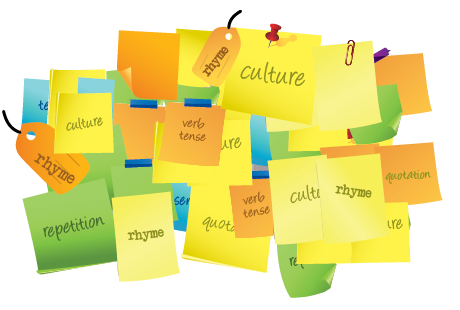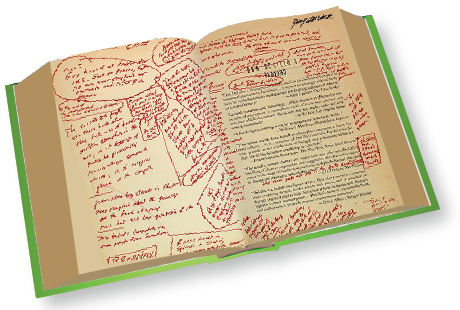Joanna Gay Luks, Cornell University
Foreign Language Reading
As a teacher of first and second-year French at an American university, I have long been frustrated by approaches to L2 reading. Two assumptions seem to prevail: 1) language content should center on concrete subjects and literal meanings, and 2) the use of the L1 should be avoided. I find both assumptions questionable because language is inherently metaphorical and students necessarily filter their L2 interpretations through their L1 subjectivities. So, I decided to create a social reading activity for beginning, first semester French that permitted the use of English as part of my students’ interpretive process.
The Assignment
I compiled a selection of prose poems from Dany Laferrière’s Chronique de la dérive douce, a book that recounts in 365 prose poems the first year (1976) that Laferrière spent in Canada as a refugee from the Duvalier regime in Haiti. I provided students with some brief background information on Lafferière as well as context-specific glosses for some of the new vocabulary. Using eComma, my students noted their expectations, read the text, and shared their comments with each other in English. The entire assignment was done asynchronously as homework.
Student Comments
Because I was interested in understanding my students’ meaning-making activity, I focused on eComma’s commenting function. I was pleased to find evidence of a wide range of interpretive strategies in their comments:
Evaluating the Meanings of Foreign Words
We are limited, here, by our ability to work with a word in French while not knowing exactly what it translates to in French. Does “interminable” [have] the exact same [meaning] in French as it does in English? If so than “Un baiser interminable” carries a negative connotation: a kiss that’s unbearably, almost annoyingly long and dragged out. But, in French, “interminable” may also translate to other, less loaded words, such as perhaps “endless.” Then, connotation changes: perhaps the author isn’t put off by the extravagance of the kiss but, rather, admires it?
Reflecting Upon Cultural Differences
It also makes me think of the huge cultural divide between Montreal and Haiti despite the fact that French is spoken in both locations. It is seems to me more like a cultural difference – that kissing in public would have caused a “riot” but people here pass by without glancing. I find this line amazing. We take for granted how much freedom we have to express ourselves and our love, and we forget that other countries and cultures are not so accepting.
Interpreting the Meanings of Textual Features
I am sensing a shift in this stanza. In the beginning, he is referring to a dictatorship, which we can identify as being evil and strict…. Then, the tone shifts when he refers to himself as being a virgin, which we can identify as being innocent and pure… […] I believe that this shift is meant to shock us and create an uncomfortable tone that captivates us and encourages us to read more.
Connecting Reading to Personal Experience
Little ironic that we’re undertaking the same “voyage” in having to say everything (or, at least, having to try to say everything) in a language that is not our mother tongue, i.e. French class!
Co-constructing Meaning
I actually did not get that impression when I read it, but it really does make sense and I completely agree with you…. It’s as if he can make a physical connection in this new world, but he cannot make a deeper one because so many differences exist…… Also, I do sense a shift in tone […] He begins the stanza with peaceful pictures (trees, the sky, music, etc)…. Then he continues on that path by including love….. We expect him to continue, but it instantly shifts to darkness (death, disease, anger)…. Finally he changes the tone back to peaceful (joy, dream, pleasure)…. It’s like he takes us on a wild rollercoaster that we didn’t expect to go on.
Preliminary Conclusions
- The use of English allows students to take greater risks in expressing their interpretations.
- Social reading permits students to exploit the text on many levels and thus precludes certain pre-reading activities.
- Social reading models effective reading strategies for learners who may not employ them otherwise.
- The inductive nature of social reading (discovering meaning through social interaction) heightens the appreciation of the text, of reading in a foreign language, and of the fruitfulness of collaboration.
Future Applications of eComma
eComma is a tool for social reading, a new form of reading that requires a reexamination and adjustment of current L2 pedagogy. I would like to try a similar activity for intermediate courses to explore the effect of the use of the L1 and the L2. In particular, I would like to give different classes the same text and ask one class to comment in English, a second class to comment in French, and a third class to comment in either language. What are the affordances of L1 and L2 in social reading? How does the use of the L1 and L2 benefit FL development? I have recently written an OER workbook of literacy activities for L2 French called Le littéraire dans le quotidien (“The Literary in the Everyday”) that incorporates many of the ideas inspired by eComma, such as the use of the L1 to explore L2 meaning and the concept of literacy as social practice. As part of this OER, I have included a section aimed at all language teachers (not just French teachers) that explains the theoretical approach. In addition, COERLL is developing templates of my activities in English to show how the concept of the literary in the everyday can be applied to any language and any level.





